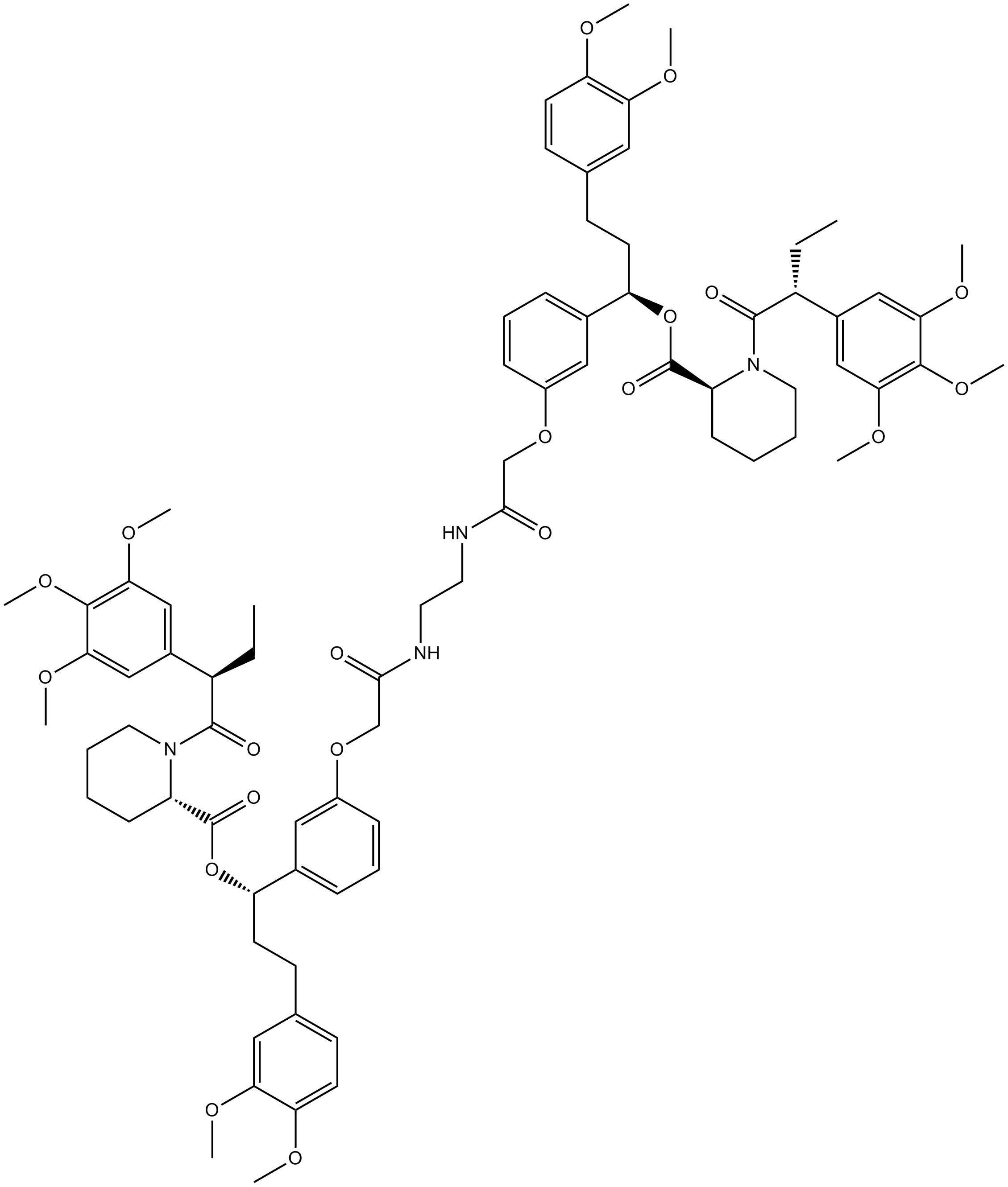AP1903 (Synonyms: AP1903) |
| Catalog No.GC15586 |
AP1903 (AP1903) is a dimerizer agent that acts by cross-linking the FKBP domains. AP1903 (AP1903) dimerizes the Caspase 9 suicide switch and rapidly induces apoptosis.
Products are for research use only. Not for human use. We do not sell to patients.

Cas No.: 195514-63-7
Sample solution is provided at 25 µL, 10mM.
IC50: 5 nM for F36V-FKBP in competition fluorescence polarization assay
FKBP ligand homodimers can be used to trigger signaling events inside cells and animals that have been engineered to express fusions between and FKBP appropriate signaling domains. However, use of these dimerizers in vivo is potentially limited by ligand binding to endogenous FKBP. AP1903 is a homodimer of the modified ligand for FKBP.
In vitro: By selective inhibition of FKBP, AP1903 elicited potent and dose-dependent apoptotic death of the human fibrosarcoma line HT1080 engineered cells in culture, with an EC50 of ~0.1 nM [1].
In vivo: In an mouse model of conditional cell ablation, animals were i.v. treated with various doses of AP1903, and then serum hGH levels were determined as a measure of the number of surviving cells. Results showed that AP1903 elicited a dose-dependent decrease in levels of serum hGH, with a half-maximal effective dose of 0.4 mg/kg [1].
Clinical trials: In an intravenous, single-blind, placebo- and saline-controlled, ascending-dose study, AP1903 was shown to be safe and well tolerated at all dose levels and demonstrated a favorable PK profile at doses well above the anticipated therapeutic dose [2].
References:
[1] Clackson T, Yang W, Rozamus LW, Hatada M, Amara JF, Rollins CT, Stevenson LF, Magari SR, Wood SA, Courage NL, Lu X, Cerasoli F Jr, Gilman M, Holt DA. Redesigning an FKBP-ligand interface to generate chemical dimerizers with novel specificity. Proc Natl Acad Sci U S A. 1998 Sep 1;95(18):10437-42.
[2] Iuliucci JD, Oliver SD, Morley S, Ward C, Ward J, Dalgarno D, Clackson T, Berger HJ. Intravenous safety and pharmacokinetics of a novel dimerizer drug, AP1903, in healthy volunteers. J Clin Pharmacol. 2001 Aug;41(8):870-9.
Average Rating: 5 (Based on Reviews and 13 reference(s) in Google Scholar.)
GLPBIO products are for RESEARCH USE ONLY. Please make sure your review or question is research based.
Required fields are marked with *




















